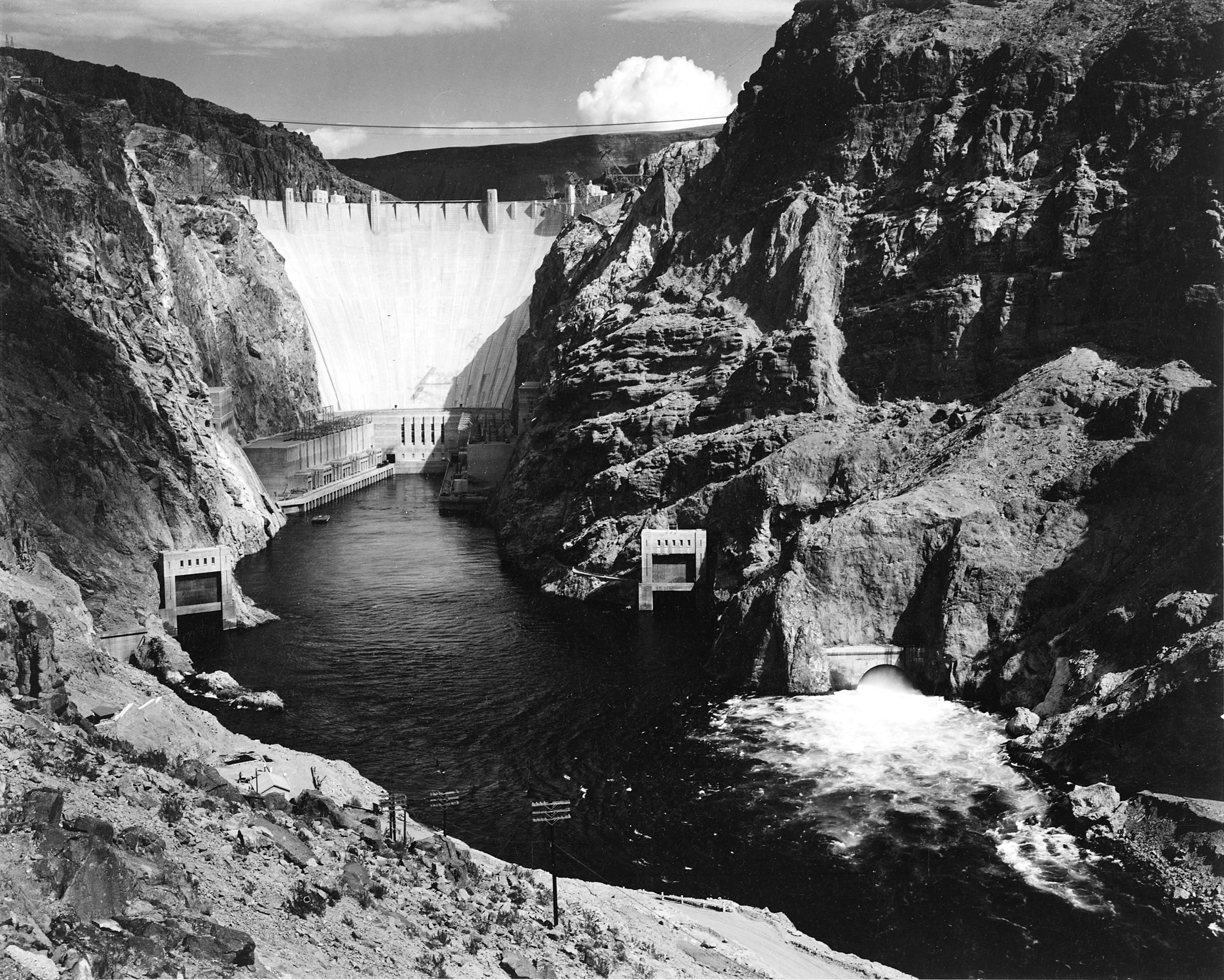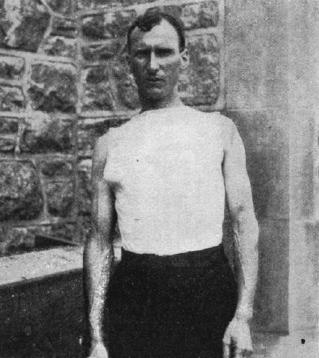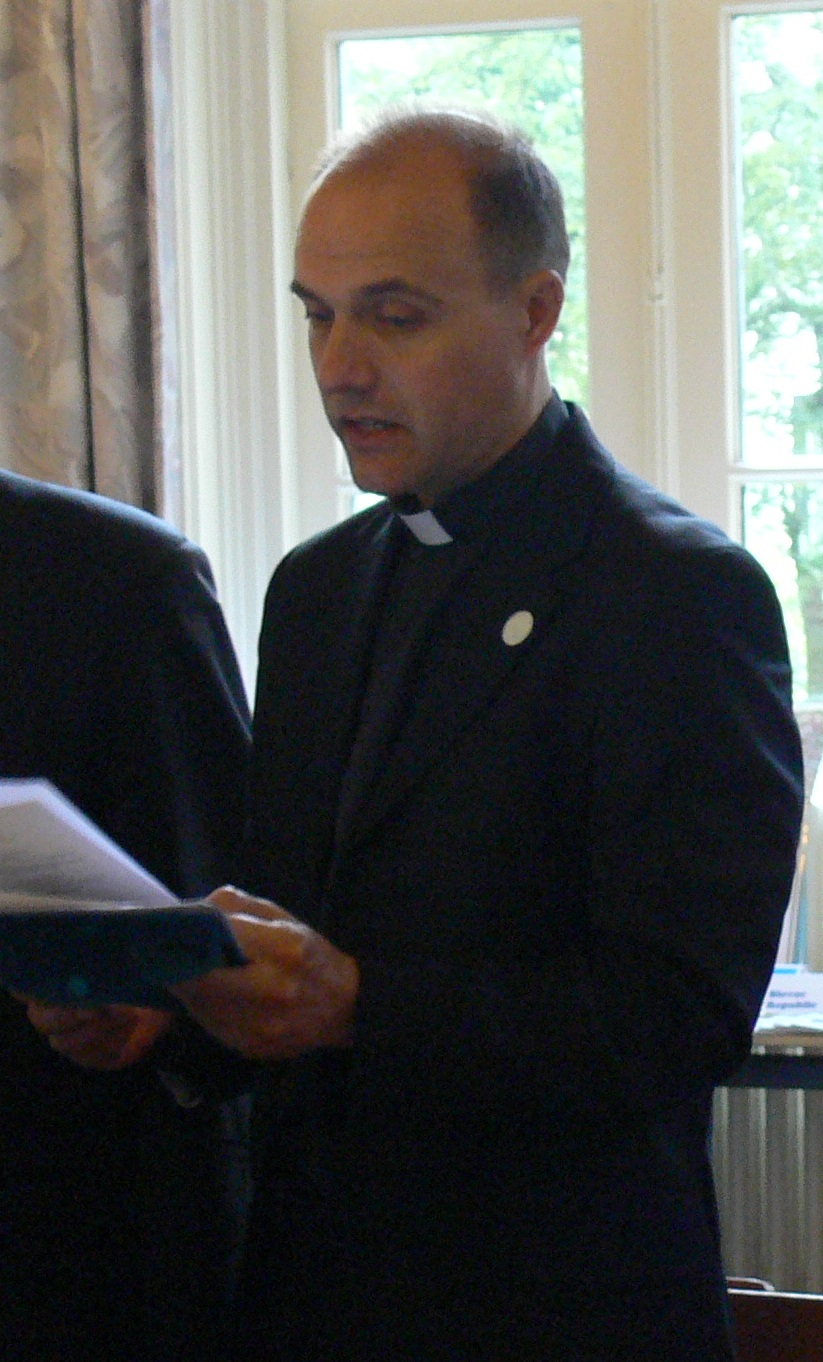|
Alexander Sipiagin
Archpriest Alexander Sipiagin (August 17, 1875January 16, 1941) was a politician, a priest of the Catholic Church and a member of Russian apostolate. Biography Sipiagin was born into a noble family in Tbilisi. His father was in the military and his uncle was the Interior Minister Dmitry Sipyagin. In 1894 he entered the University of Kharkiv, then studied geology at the University of Vienna. Sipiagin after taught at Sevastopol and Kharkiv. In 1906 the Constitutional Democratic Party elected him deputy of the 1906 Russian legislative election. The sudden death of the wife nullifies the previous plans, Sipiagin converted to Catholicism from Russian Orthodoxy and in 1909 became a priest. Influenced his choice acquaintance with Bishop Eduard von der Ropp, who instructed Sipyagin to teach at Roman Catholic seminary in Saratov. At the beginning of the Russian Civil War, he was sent to Constantinople, where he establishes contact with the International Red Cross and deals with the fate of ... [...More Info...] [...Related Items...] OR: [Wikipedia] [Google] [Baidu] |
Monsignor
Monsignor (; it, monsignore ) is an honorific form of address or title for certain male clergy members, usually members of the Roman Catholic Church. Monsignor is the apocopic form of the Italian ''monsignore'', meaning "my lord". "Monsignor" can be abbreviated as Mons... or Msgr. In some countries, the title "monsignor" is used as a form of address for bishops. However, in English-speaking countries, the title is dropped when a priest is appointed as bishop. The title "monsignor" is a form of address, not an appointment (such as a bishop or cardinal). A priest cannot be "made a monsignor" or become "the monsignor of a parish". The title "Monsignor" is normally used by clergy (men only) who have received one of the three classes of papal honors: * Protonotary apostolic (the highest honored class) * Honorary prelate * Chaplain of his holiness (the lowest honored class) The pope bestows these papal honors upon clergy who: * Have rendered a valuable service to the church * Pr ... [...More Info...] [...Related Items...] OR: [Wikipedia] [Google] [Baidu] |
Clergy From Tbilisi
Clergy are formal leaders within established religions. Their roles and functions vary in different religious traditions, but usually involve presiding over specific rituals and teaching their religion's doctrines and practices. Some of the terms used for individual clergy are clergyman, clergywoman, clergyperson, churchman, and cleric, while clerk in holy orders has a long history but is rarely used. In Christianity, the specific names and roles of the clergy vary by denomination and there is a wide range of formal and informal clergy positions, including deacons, elders, priests, bishops, preachers, pastors, presbyters, ministers, and the pope. In Islam, a religious leader is often known formally or informally as an imam, caliph, qadi, mufti, mullah, muezzin, or ayatollah. In the Jewish tradition, a religious leader is often a rabbi (teacher) or hazzan (cantor). Etymology The word ''cleric'' comes from the ecclesiastical Latin ''Clericus'', for those belonging to ... [...More Info...] [...Related Items...] OR: [Wikipedia] [Google] [Baidu] |
Journalists From Tbilisi
A journalist is an individual that collects/gathers information in form of text, audio, or pictures, processes them into a news-worthy form, and disseminates it to the public. The act or process mainly done by the journalist is called journalism. Roles Journalists can be broadcast, print, advertising, and public relations personnel, and, depending on the form of journalism, the term ''journalist'' may also include various categories of individuals as per the roles they play in the process. This includes reporters, correspondents, citizen journalists, editors, editorial-writers, columnists, and visual journalists, such as photojournalists (journalists who use the medium of photography). A reporter is a type of journalist who researches, writes and reports on information in order to present using sources. This may entail conducting interviews, information-gathering and/or writing articles. Reporters may split their time between working in a newsroom, or from home, and going out ... [...More Info...] [...Related Items...] OR: [Wikipedia] [Google] [Baidu] |
1941 Deaths
Events Below, the events of World War II have the "WWII" prefix. January * January– August – 10,072 men, women and children with mental and physical disabilities are asphyxiated with carbon monoxide in a gas chamber, at Hadamar Euthanasia Centre in Germany, in the first phase of mass killings under the Action T4 program here. * January 1 – Thailand's Prime Minister Plaek Phibunsongkhram decrees January 1 as the official start of the Thai solar calendar new year (thus the previous year that began April 1 had only 9 months). * January 3 – A decree (''Normalschrifterlass'') promulgated in Germany by Martin Bormann, on behalf of Adolf Hitler, requires replacement of blackletter typefaces by Antiqua. * January 4 – The short subject '' Elmer's Pet Rabbit'' is released, marking the second appearance of Bugs Bunny, and also the first to have his name on a title card. * January 5 – WWII: Battle of Bardia in Libya: Australian and Britis ... [...More Info...] [...Related Items...] OR: [Wikipedia] [Google] [Baidu] |
1875 Births
Events January–March * January 1 – The Midland Railway of England abolishes the Second Class passenger category, leaving First Class and Third Class. Other British railway companies follow Midland's lead during the rest of the year (Third Class is renamed Second Class in 1956). * January 5 – The Palais Garnier, one of the most famous opera houses in the world, is inaugurated in Paris. * January 12 – Guangxu Emperor, Guangxu becomes the 11th Qing Dynasty Emperor of China at the age of 3, in succession to his cousin. * January 14 – The newly proclaimed King Alfonso XII of Spain (Queen Isabella II's son) arrives in Spain to restore the monarchy during the Third Carlist War. * February 3 – Third Carlist War – Battle of Lácar: Carlist commander Torcuato Mendiri, Torcuato Mendíri secures a brilliant victory, when he surprises and routs a Government force under General Enrique Bargés at Lácar, east of Estella, nearly capturing newly cr ... [...More Info...] [...Related Items...] OR: [Wikipedia] [Google] [Baidu] |
Vladimir Kolupaev
Vladimir Kolupaev (born September 17, 1964, Mesherskoye, Chekhovsky District, Russia) is a historian, Doctor of Historical Sciences, a graduate of the Moscow State Art and Cultural University and Catholic priest. Biography Since 1989, Kolupaev has been a monk named Rostislav, ordained in 1989 an Orthodox priest, but in 2004 moved to Catholicism, joining the UGCC Ukrainian Catholic Archeparchy of Lviv. Kolupaev has various topics of scientific interest: history, culture and religious life of Russian abroad. Historical subjects taught in Moscow, Kaluga, Obninsk and Novosibirsk. He is the author of several books and research papers in Russian and foreign publications, member of national and international scientific conferences. Member of the International Scientific Committee and the Italian edition of the magazine ''La Nuova Europa.'' He is also a member of editorial board of scientific and educational journal "Studia Humanitatis" . He works at the Christian Russia centre in S ... [...More Info...] [...Related Items...] OR: [Wikipedia] [Google] [Baidu] |
Campo Verano
The Campo Verano (Italian: ''Cimitero del Verano'') is a cemetery in Rome, Italy, founded in the early 19th century. The monumental cemetery is currently divided into sections: the Jewish cemetery, the Catholic cemetery, and the monument to the victims of World War I. History The Verano (officially the "Communal Monumental Cemetery of Campo Verano") is located in the quartiere Tiburtino of Rome, near the Basilica of San Lorenzo fuori le mura. The name ''verano'' refers to the Ancient Roman ''campo dei Verani'' that was located here. The zone contained ancient Christian catacombs. A modern cemetery was not established until the Napoleonic Kingdom of Italy during 1807–1812, when the architect Giuseppe Valadier was commissioned for designs after the required burials to take place outside of the city walls. The papal authorities still have some control over the administration. Pope Francis celebrated All Saints Day Mass here on a papal visit to the cemetery on 1 November 2014. ... [...More Info...] [...Related Items...] OR: [Wikipedia] [Google] [Baidu] |
Rome
, established_title = Founded , established_date = 753 BC , founder = King Romulus ( legendary) , image_map = Map of comune of Rome (metropolitan city of Capital Rome, region Lazio, Italy).svg , map_caption = The territory of the ''comune'' (''Roma Capitale'', in red) inside the Metropolitan City of Rome (''Città Metropolitana di Roma'', in yellow). The white spot in the centre is Vatican City. , pushpin_map = Italy#Europe , pushpin_map_caption = Location within Italy##Location within Europe , pushpin_relief = yes , coordinates = , coor_pinpoint = , subdivision_type = Country , subdivision_name = Italy , subdivision_type2 = Regions of Italy, Region , subdivision_name2 = Lazio , subdivision_type3 = Metropolitan cities of Italy, Metropolitan city , subdivision_name3 = Metropolitan City of Rome Capital, Rome Capital , government_footnotes= , government_type = Mayor–council gover ... [...More Info...] [...Related Items...] OR: [Wikipedia] [Google] [Baidu] |
Poland
Poland, officially the Republic of Poland, , is a country in Central Europe. Poland is divided into Voivodeships of Poland, sixteen voivodeships and is the fifth most populous member state of the European Union (EU), with over 38 million people, and the List of European countries by area, seventh largest EU country, covering a combined area of . It extends from the Baltic Sea in the north to the Sudetes and Carpathian Mountains in the south, bordering seven countries. The territory is characterised by a varied landscape, diverse ecosystems, and Temperate climate, temperate transitional climate. The capital and List of cities and towns in Poland, largest city is Warsaw; other major cities include Kraków, Wrocław, Łódź, Poznań, and Gdańsk. Prehistory and protohistory of Poland, Humans have been present on Polish soil since the Lower Paleolithic, with continuous settlement since the end of the Last Glacial Period over 12,000 years ago. Culturally diverse throughout ... [...More Info...] [...Related Items...] OR: [Wikipedia] [Google] [Baidu] |
John Paul II Catholic University Of Lublin
John Paul II Catholic University of Lublin ( pl, Katolicki Uniwersytet Lubelski Jana Pawła II, la, Universitas Catholica Lublinensis Ioannis Pauli II, abbreviation KUL), established in 1918. It is the only private college in Poland with the status of a university. History Father Idzi Radziszewski founded the university in 1918. Vladimir Lenin allowed the priest to take the library and equipment of the Saint Petersburg Roman Catholic Theological Academy to Poland to launch the university just as Poland regained its independence. The aim of the university was to be a modern place of higher education that would conduct research in the spirit of harmony between science and faith. The university sought to produce a new Catholic intelligentsia that would play a leading role in Poland. The number of students increased from 399 in 1918–1919 to 1440 in 1937–1938. This growth was interrupted by the outbreak of the Second World War and Nazi Germany's occupation of Poland. Of all th ... [...More Info...] [...Related Items...] OR: [Wikipedia] [Google] [Baidu] |
Harbin
Harbin (; mnc, , v=Halbin; ) is a sub-provincial city and the provincial capital and the largest city of Heilongjiang province, People's Republic of China, as well as the second largest city by urban population after Shenyang and largest city by metropolitan population (urban and rural together) in Northeast China. Harbin has direct jurisdiction over nine metropolitan districts, two county-level cities and seven counties, and is the eighth most populous Chinese city according to the 2020 census. The built-up area of Harbin (which consists of all districts except Shuangcheng and Acheng) had 5,841,929 inhabitants, while the total metropolitan population was up to 10,009,854, making it one of the 50 largest urban areas in the world. Harbin, whose name was originally a Manchu word meaning "a place for drying fishing nets", grew from a small rural settlement on the Songhua River to become one of the largest cities in Northeast China. Founded in 1898 with the coming of th ... [...More Info...] [...Related Items...] OR: [Wikipedia] [Google] [Baidu] |


.jpg)




